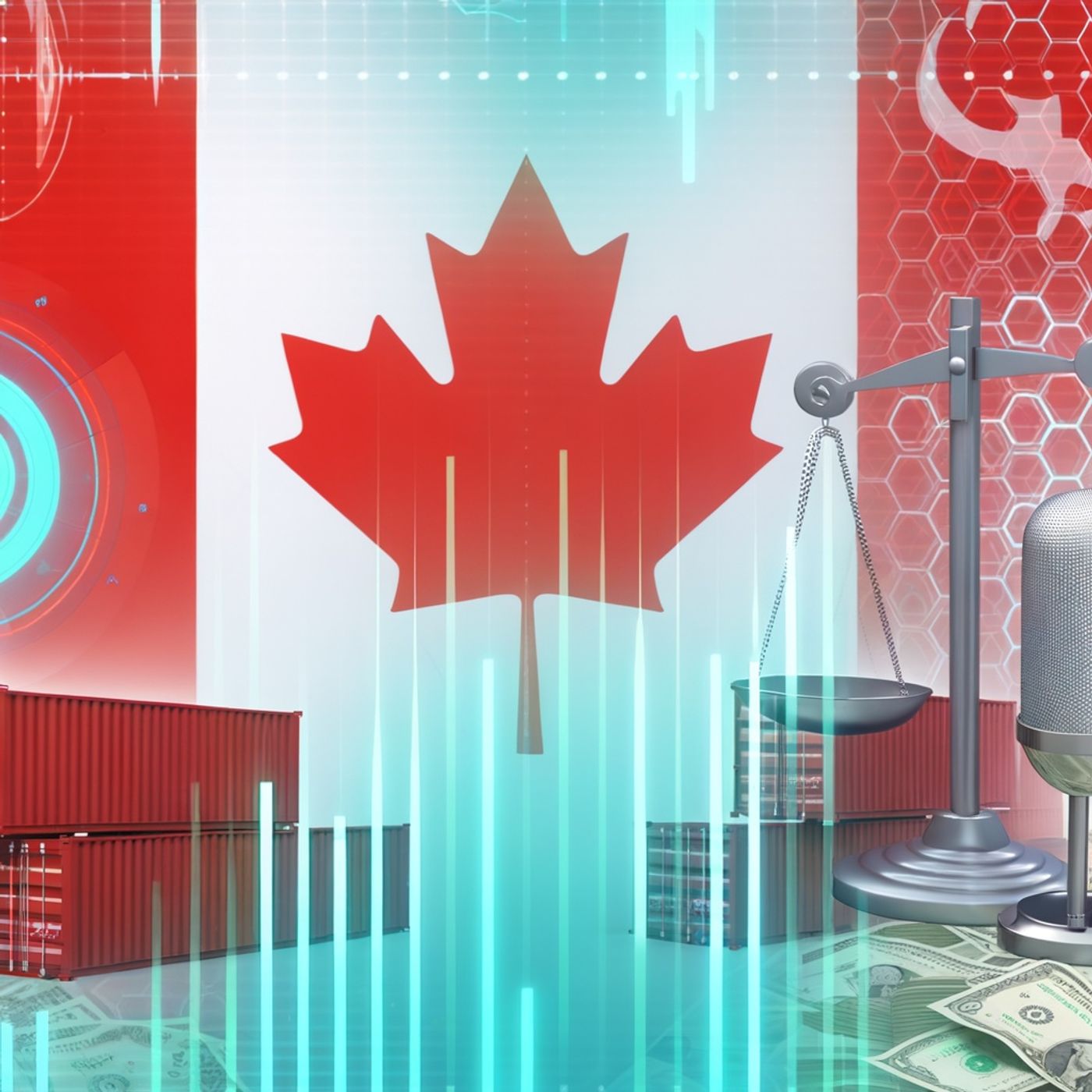Canada-US Trade War Escalates: Tariffs Reshape Economic Landscape and Industrial Strategy Amid USMCA Tensions
Update: 2025-09-08
Description
Listeners, welcome to Canada Tariff News and Tracker, your source for the latest developments shaping Canada-U.S. trade policy and tariffs.
Today, tensions between Canada and the United States are at their highest since the last trade war, driven largely by new measures from President Trump’s administration. Since March, the U.S. has imposed 25% tariffs on steel, aluminum, and automobile imports, specifically targeting Canada — which remains America's largest supplier of these materials. This has sent shockwaves through Canadian industry, especially affecting steel, aluminum, and auto manufacturing. In response, Canada's government swiftly retaliated, enacting 25% tariffs on an additional $20.6 billion in American goods this spring and, by April, introducing a 25% tariff specifically on U.S.-made vehicles not compliant with USMCA requirements, according to reporting from Wikipedia’s entry on tariffs in the second Trump administration. Canada also suspended planned increases in retaliation as officials rushed to file for USMCA compliance, but the initial measures remain, signaling deepening tensions. The Wall Street Journal has described these moves as a profound shift in decades of economic integration between the allies, with ripple effects for both countries' economies.
This friction is also affecting Canadian politics and industrial strategy. Mark Carney, Canada's newly elected Liberal Prime Minister, announced nearly $5 billion in supports for companies hit hardest, focusing on steel, autos, lumber, and aluminum. According to Investment Executive, Carney’s package includes funds to help companies adapt, expand into new markets, and reskill workers, as well as a “Buy Canadian” policy for federal procurement—requiring initial purchases of Canadian steel and lumber for government projects. Organizations like the Canadian Steel Producers Association have welcomed these moves, believing they could replace over 80% of imported steel in the domestic market. Yet, voices like the National Council of Unemployed Workers have warned that support for displaced workers has been uneven, and opposition parties say even more aggressive action is needed.
On the policy front, tariffs now represent about 5% of U.S. federal revenue, up from just 2% before Trump's new measures. While President Trump had briefly delayed tariffs on USMCA-compliant goods, these exemptions are temporary and narrowly defined. By late August, Trump’s administration was also threatening to hike the overall reciprocal tariff rate to as much as 20%, adding further uncertainty according to the Trade Compliance Resource Hub.
With U.S.-Canada trade now facing its most significant barriers in decades and Canada actively re-orienting its industrial strategy and workforce policy, both exporters and consumers are watching closely. Headlines across financial outlets and trade trackers underline: a new era of Canada-U.S. trade relations is here—with tariffs and political maneuvers setting the stage.
Thank you for tuning in to Canada Tariff News and Tracker. Don’t forget to subscribe for all the latest updates and insights. This has been a quiet please production, for more check out quiet please dot ai.
For more check out https://www.quietperiodplease.com/
Avoid ths tariff fee's and check out these deals https://amzn.to/4iaM94Q
This content was created in partnership and with the help of Artificial Intelligence AI
Today, tensions between Canada and the United States are at their highest since the last trade war, driven largely by new measures from President Trump’s administration. Since March, the U.S. has imposed 25% tariffs on steel, aluminum, and automobile imports, specifically targeting Canada — which remains America's largest supplier of these materials. This has sent shockwaves through Canadian industry, especially affecting steel, aluminum, and auto manufacturing. In response, Canada's government swiftly retaliated, enacting 25% tariffs on an additional $20.6 billion in American goods this spring and, by April, introducing a 25% tariff specifically on U.S.-made vehicles not compliant with USMCA requirements, according to reporting from Wikipedia’s entry on tariffs in the second Trump administration. Canada also suspended planned increases in retaliation as officials rushed to file for USMCA compliance, but the initial measures remain, signaling deepening tensions. The Wall Street Journal has described these moves as a profound shift in decades of economic integration between the allies, with ripple effects for both countries' economies.
This friction is also affecting Canadian politics and industrial strategy. Mark Carney, Canada's newly elected Liberal Prime Minister, announced nearly $5 billion in supports for companies hit hardest, focusing on steel, autos, lumber, and aluminum. According to Investment Executive, Carney’s package includes funds to help companies adapt, expand into new markets, and reskill workers, as well as a “Buy Canadian” policy for federal procurement—requiring initial purchases of Canadian steel and lumber for government projects. Organizations like the Canadian Steel Producers Association have welcomed these moves, believing they could replace over 80% of imported steel in the domestic market. Yet, voices like the National Council of Unemployed Workers have warned that support for displaced workers has been uneven, and opposition parties say even more aggressive action is needed.
On the policy front, tariffs now represent about 5% of U.S. federal revenue, up from just 2% before Trump's new measures. While President Trump had briefly delayed tariffs on USMCA-compliant goods, these exemptions are temporary and narrowly defined. By late August, Trump’s administration was also threatening to hike the overall reciprocal tariff rate to as much as 20%, adding further uncertainty according to the Trade Compliance Resource Hub.
With U.S.-Canada trade now facing its most significant barriers in decades and Canada actively re-orienting its industrial strategy and workforce policy, both exporters and consumers are watching closely. Headlines across financial outlets and trade trackers underline: a new era of Canada-U.S. trade relations is here—with tariffs and political maneuvers setting the stage.
Thank you for tuning in to Canada Tariff News and Tracker. Don’t forget to subscribe for all the latest updates and insights. This has been a quiet please production, for more check out quiet please dot ai.
For more check out https://www.quietperiodplease.com/
Avoid ths tariff fee's and check out these deals https://amzn.to/4iaM94Q
This content was created in partnership and with the help of Artificial Intelligence AI
Comments
In Channel





